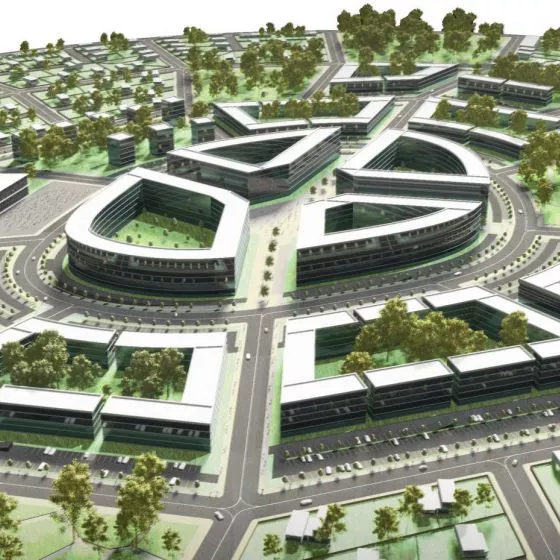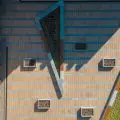The design of a modern building on the site of the defunct Prinz-Heinrich-Baude mountain hut is the thesis of Kamil Szymanski, made at the Wrocław University of Technology under the supervision of Dr. Andrzej Sobolewski.
A night spent in a mountain hostel is a unique experience, allowing contact with nature and a break from everyday life. Unfortunately, the accommodation base of the Polish Karkonosze forces tourists to choose between proximity to nature and the comfort of accommodation.
Kamil Szymanski has proposed a solution to this problem by introducing a facility that combines the advantages of a classic mountain hostel with quality that meets modern standards.
The hostel is located in the Great Pond Basin in the Karkonosze Mountains.
© Kamil Szymanski
The facility is located in the Great Pond Basin in Karkonosze, where the German Prinz-Heinrich-Baude chalet was built in the late 19th century. Luxurious for the time, the building was very popular, but after World War II it was abandoned and burned down in the late 1940s.
respect for nature and history
The fundamental idea shaping the form of the Prince Henry hostel is respect for nature, of which the building is intended to be a part. The new building preserves the ruins of the former facility, and because of the location, the extent of the interference introduced was limited to an absolute minimum. To avoid introducing an additional, extraneous mass into the harmonious space, the object was placed in a gully, and lowering it in relation to the hiking trail allowed to limit the visual impact on the landscape.
building allows contemplation of nature
© Kamil Szymanski
panoramic view
The cuboid-shaped shelter has only one elevation - the remaining walls have been sunk into the rock. The elongation of the block allows the use of natural scenic qualities. The impression of horizontality is further enhanced by limiting the height to one story.
cross-section of the hostel
© Kamil Szymanski
The structure, with an area of over 2407 square meters, consists of five zones. The first, the entrance, is located at the height of the terrace, while the other four are located below. Guest rooms, located on the northwest side, occupy the largest area. The central part is dedicated to public services, which are adjacent to the block of staff rooms. Technical rooms enclose the block on the south side.
Access to the hostel is facilitated by a staircase cut into the slope, protected by a weatherproof enclosure. Another intrusion is the widening of a short stretch of pedestrian road for vehicular traffic. The road ends with a maneuvering area, which in special cases can serve as a helipad.
The minimalist block does not compete with the mountain landscape, and its huge terrace allows for contemplation of nature. The project was nominated for an award in the 2019 Concrete Architecture competition.
elaborated{tag:AuthorAiB}
illustrations courtesy of Kamil Szymanski




















































